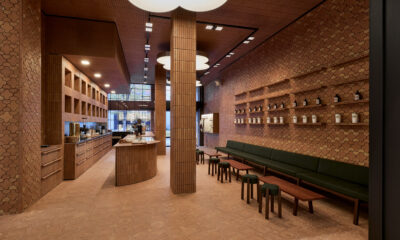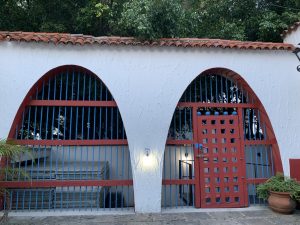As retail continues on its ever-changing evolutionary path, it should be known that if one isn't thinking globally today, one isn't thinking at all. Retail, fashion and the art of visual merchandising have always been reflections of who we are. They're celebrations of our culture, our values and our place in time. And now in the age of digital connection, we seem more in tune with distant cultures than perhaps our own.
As the world continues to shrink, with faraway places becoming more accessible, it is increasingly essential to understand and respect our neighbors, both near and far. And if there is a common thread that unites distant shores, perhaps it’s in the showplaces of consumerism. We all have needs, wants and desires no matter where we are from. And while selling stages around the world may differ, it’s the successful retailer that recognizes design as a tool of communication and a conduit for profit. Design matters, whether in Milan, Ginza, Japan, or Guadalajara, Mexico.
I recently returned from a trip to Guadalajara where I was a guest speaker of ALVM, the Association of Latin American Visual Merchandisers. The opening reception for this year’s annual ALVM event was held at Casa Cristo, the home of the one-time mayor of Guadalajara, Gustavo R. Cristo. In 1927, Cristo commissioned Luis Barragán, an up-and-coming young architect at the time, to design his home. Barragán, of course, went on to become a world-class architect winning the Pritzker Prize, the highest award in architecture, in 1980. His own home, the Luis Barragán House and Studio in Mexico City, was declared a UNESCO World Heritage Site in 2004.
“Each year we have a theme for the ALVM event,” said Susana Castillo, president of the association. “We selected Casa Cristo for the opening reception because we wanted to welcome this international group of design professionals into a very representative city space offering a dynamic architectural experience.”
Now the headquarters for the College of Architects of the State of Jalisco, Casa Cristo features soaring arches, brilliant stained-glass windows, a tiled roof and dynamic linear forms. Barragán’s early inclination toward Moorish design is clearly evident in the building’s geometries. This early work became somewhat emblematic of the architect’s style, as he manipulated the circulation of natural light bouncing off adobe walls and cedar wood accents. Color was also a signature element strategically placed to highlight form and mass.
Barragán, born in 1902, has had a major influence on contemporary architectural design both visually and conceptually. When he met Le Corbusier, he developed a keen interest in modernism. And while subsequent works exhibited modernist sensibilities, Barragán rejected functionalism and worked toward an “emotional architecture.” He once said, "Any work of architecture which does not express serenity is a mistake.”
Advertisement
“The house is an oasis in the middle of the city. It clearly shows us how a well-structured space can lead us to diverse experiences with sounds, temperatures and colors. It also shows us how to get ahead of our time with a magnificent roof garden designed in 1927 that is so fashionable today,” said Castillo.
Any effective environment, whether an urban center, a well-designed home or a retail environment must have points of interest or landmarks. Casa Cristo features a grand Moorish tower, a silver-gilded entry door, sweeping arches and strategically placed stained glass windows.
“The experience that we have in stores is an essential ingredient of success. The product offerings by themselves, or the price points, will not make the brands grow. We need to create experiences, and without a doubt Barragán managed to create experience in his works,” Castillo concludes, “I believe Casa Cristo is a clear example of how we can and should create spaces that represent the identity of the brand through all the elements that are experienced in the store.”
Eric Feigenbaum is a recognized leader in the visual merchandising and store design industries with both domestic and international design experience. He served as corporate director of visual merchandising for Stern’s Department Store, a division of Federated Department Stores, from 1986 to 1995. After Stern’s, he assumed the position of director of visual merchandising for WalkerGroup/CNI, an architectural design firm in New York City. Feigenbaum was also an adjunct professor of Store Design at the Fashion Institute of Technology and formerly served as the chair of the Visual Merchandising Department at LIM College (New York) from 2000 to 2015. In addition to being the Editorial Advisor/New York Editor of VMSD magazine, Eric is also a founding member of PAVE (A Partnership for Planning and Visual Education). Currently, he is also president and director of creative services for his own retail design company, Embrace Design.


 Headlines1 week ago
Headlines1 week ago
 John Ryan2 weeks ago
John Ryan2 weeks ago
 Headlines7 days ago
Headlines7 days ago
 Headlines2 weeks ago
Headlines2 weeks ago
 Headlines1 week ago
Headlines1 week ago
 Retail Buzz3 days ago
Retail Buzz3 days ago
 Headlines1 week ago
Headlines1 week ago
 Headlines1 week ago
Headlines1 week ago
































